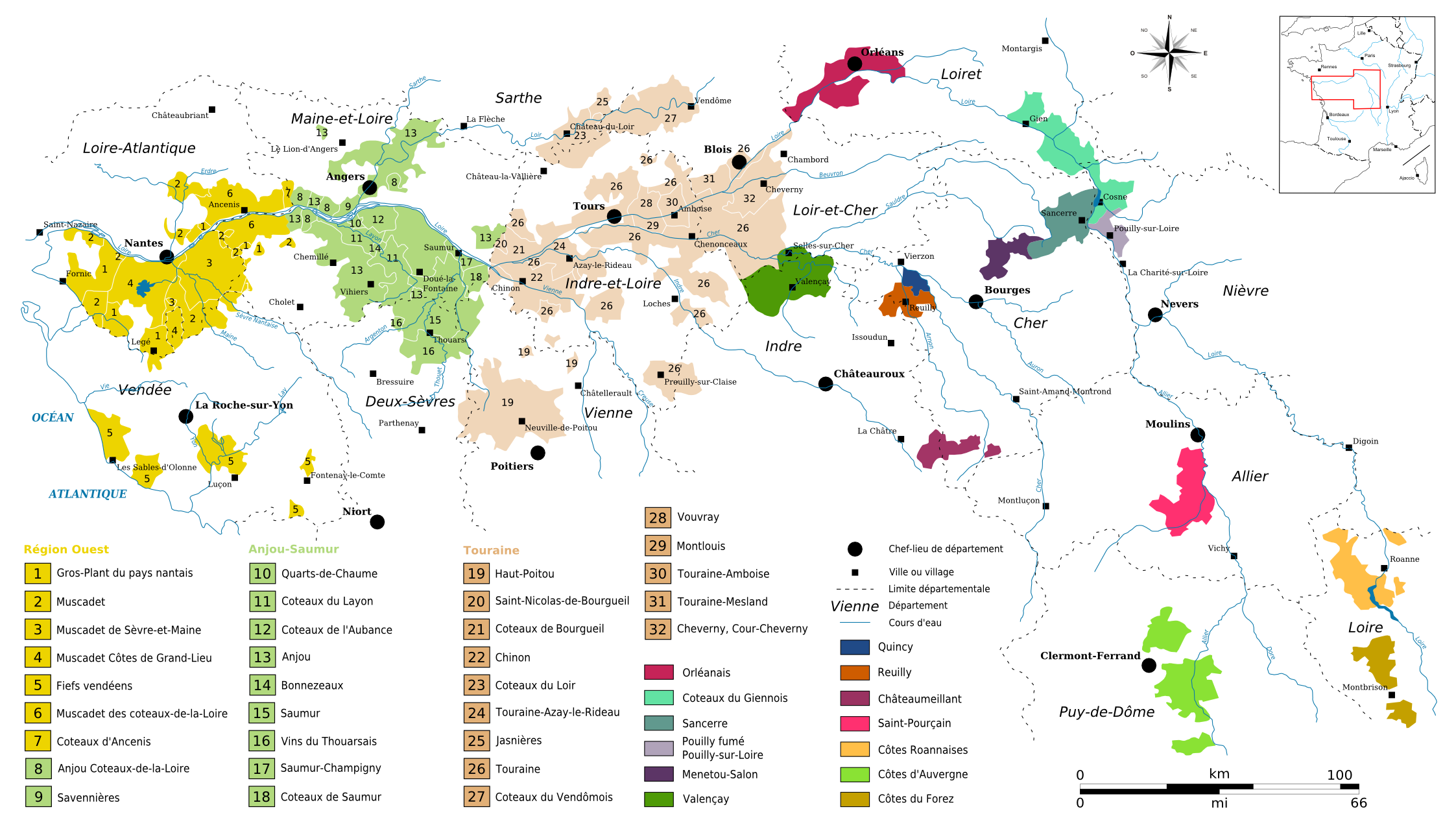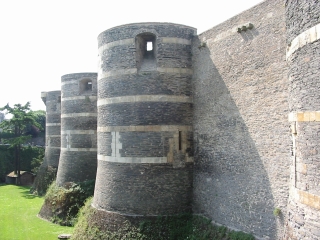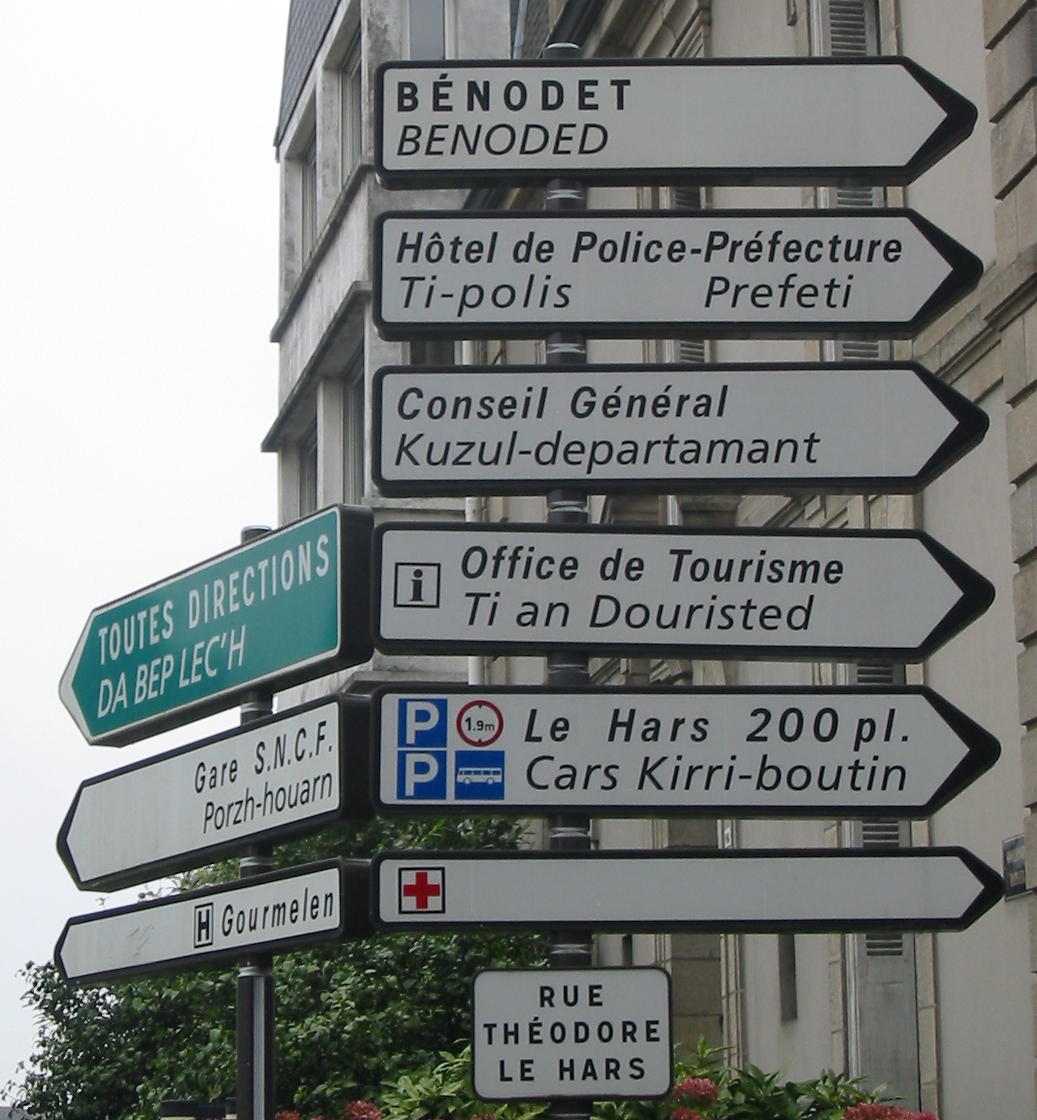We began this virtual tour de France nearly three months ago, and for the first time on our journey, we have arrived in wine country.
That seems hard to believe considering the importance of French wine in the world market and, bien sûr, to the French. However, wine has not been commercially produced in every part of France, and the regions bordering the English Channel – the focus of our first three months – are those traditionally without a wine industry.
The wine map of France is expanding, thanks to the European Union’s liberalization of French rules that previously restricted where vines could be planted. Still, the regions with wines likely to be exported and available in your local wine shop are those from the prominent regions, with Champagne being the most northern of those.
The Loire Valley is the area in neon green on the map above, and it happens to produce some of the best wine in France. With dozens of appellations (legally defined wine-growing areas), the Loire Valley is one of France’s largest and most varied wine-production regions. Diverse styles of white wine dominate, but excellent reds – particularly from the cabernet franc grape – are produced as well. Other grapes grown in the area include cabernet sauvignon, chenin blanc, chardonnay, and sauvignon blanc.

Link to the map above, for zooming in.
This is a big region covering two stops on our tour de France. This week, we’re in the Pays de la Loire, the lower river valley closest to the Atlantic Ocean. I wanted to try a wine from Saumur, mostly because I’m a book nerd and I previously read Balzac’s Eugénie Grandet, which was set in Saumur. As it turned out, the wine I purchased was an excellent accompaniment for the fish I prepared to celebrate the Pays de Loire.

First up, the main course, or le plat principal. I wanted to highlight beurre blanc sauce, which is a butter sauce invented about a century ago by a chef near Nantes and is now a classic of French cuisine. I baked some whitefish in foil to serve as a base for the sauce. The wine’s acidity was the proper contrast with the richness of the butter. It was as if the wine and the sauce were made to go together, and perhaps they were! This is why we often choose a wine from the same region as the food.
Many, many variations of beurre blanc sauce exist, with recipes readily available on the internet. We are a household of three adults, so the following recipe – which I adapted from numerous sources – was just right, although it was so delicious we all could have stuffed ourselves senseless with it.
Poisson au beurre blanc
- 4 to 8 oz filets of whitefish per person
- olive oil
- sprigs of fresh herbs, such as rosemary
- salt and pepper
- foil or parchment paper
- 2 tsp minced shallots
- 1/4 cup white wine (I used the Saumur)
- 1 stick butter, chopped into about 1-inch cubes
- 1-2 Tbsp heavy cream

Prepare all of your ingredients – mise en place (everything in its place). Heat the oven to 425F. Place each filet on a piece of foil large enough to fold into a packet. Brush or rub each piece of fish with olive oil, salt and pepper and a tablespoon or more of fresh herbs. Fold the foil or parchment over the fish and crimp the edges to seal, then place on a cookie sheet or roasting pan and bake for about 15 minutes. If it finishes before the sauce, keep it warm in the foil until ready to serve.
While the fish is baking, heat a little oil in a saucepan, low to medium heat, just enough to cook the shallots. Try not to let them brown too much, but if you get distracted like I did and nearly let them burn, don’t panic – the sauce will still be good. It has butter and wine in it, after all.
Add the wine to the shallots and let it cook down until almost completely evaporated. At this point, add the cream and cook a little more. Let it get thick but do not boil. Now turn off the heat and start whisking or stirring in the butter, little by little. You can put the pan back on the heat to help the butter, but you want to keep the sauce under 130F. Finally, add salt and pepper to taste, then enjoy over the fish.

Russian Salad
To accompany the fish, I made a salad that is definitely not traditional for France. But with all the references to Russia along the banks of the Loire from last week’s video, I felt inspired to make one of my favorite salads.
Again, many versions of this Russian salad are available. I used this one, with a bag of frozen peas (cooked in the microwave) instead of the canned.
And the finished meal is below. Trust me, it tastes much better than it looks. My food photography needs improvement.
























